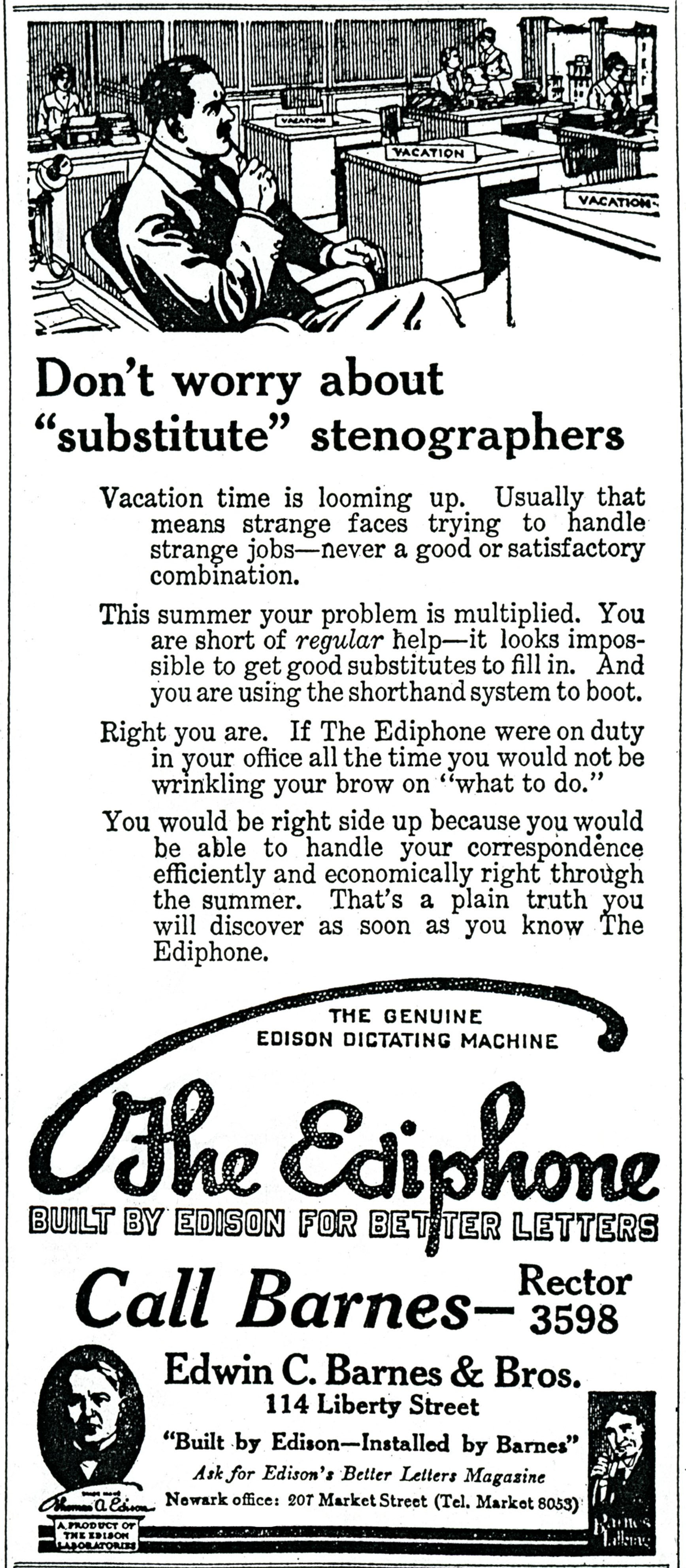Here are two advertisements in one: Pfanstiehl phonograph needles, and, Davega Department Stores.
The Davega stores were a New York metropolitan area chain that sold consumer durables, appliances, sporting goods, and apparel. The company was founded in 1879, expanded to 27 stores by 1954, and survived until April of 1963, when it declared bankruptcy.
The advertisement lists nine stores at the following locations: New York: The Hotel Commodore (111 East 42nd Street); Times Square; the Empire State Building; “Downtown”; Brooklyn, and the Bronx. New Jersey: Newark, Paterson, and Jersey City.
The phrase “phonograph needles” conjures an era that may have little resonance today (ahem…unintended pun there….) given the advent and pervasiveness of digital technology, but which is an example of the rapidity of technological and cultural change.
____________________
THIS Phonograph Needle
DOES THE WORK OF
1000 Ordinary NEEDLES
PLAYS AT LEAST 4,000 RECORDS WITHOUT CHANGE
Pfanstiehl
LONG LIFE NEEDLE
Put a Pfanstiehl needle in your phonograph and forget it. No more bother changing needles. More enjoyment from your records. Longer record life because the burnished TIP of precious metals glides smoothly along the record grooves even after thousands of plays. Used by owners of Capehart, Stromberg-Carlson, Victor, Zenith and all other fine photographs. $1.50
Hotel Commodore … 111 E. 42nd St.
Times Square … 152 w. 42nd St.
Empire State Bldg. … 18 W. 34th St.
Downtown … 63 Cortlandt St.
Brooklyn … 360 Fulton St.
Newark … 60 Park Place
Bronx … 31 E. Fordham Rd.
Paterson … 185 Main St.
Jersey City … 30 Journal Sq.
See phone book for other addresses.
DAVEGA
Mail Orders . 111 E. 42nd St., N.Y. 17, N.Y.
____________________
I don’t know if the company still exists as an independent entity, but its products are still available through retailers of specialized electronic and audio gear, such as TheVoiceofMusic, Turntable Needles, and, Phonographs.org.
Reference
Davega Stores, at wikipedia








